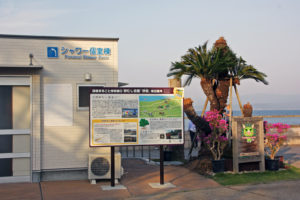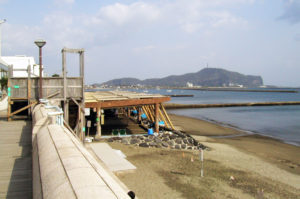Sand bath, in Ibusuki
Ibusuki is an Onsen Resort that is famous for its sand baths, where bathers are buried in
naturally heated sand.
The town encompasses the southern tip of the Satsuma Peninsula, and the main downtown
area is along the coast facing Kinko bay.
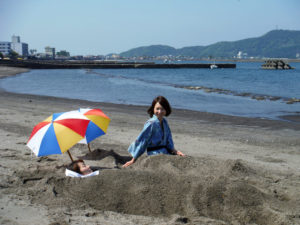 |
|
|
Martial art, Karate
Karate is a martial art developed in the Okinawa, Kyushu, and is art of self-defense
that use no weapons and relies instead on three main techniques; arm strike,
thrusts and kicks.
A distinction is made between offensive and defensive tourniquets, which
are modified according to the position of one’s opponent. Today karate
becomes popularity for self-perfection, for cultural reasons, for self-defense
and as a sport.
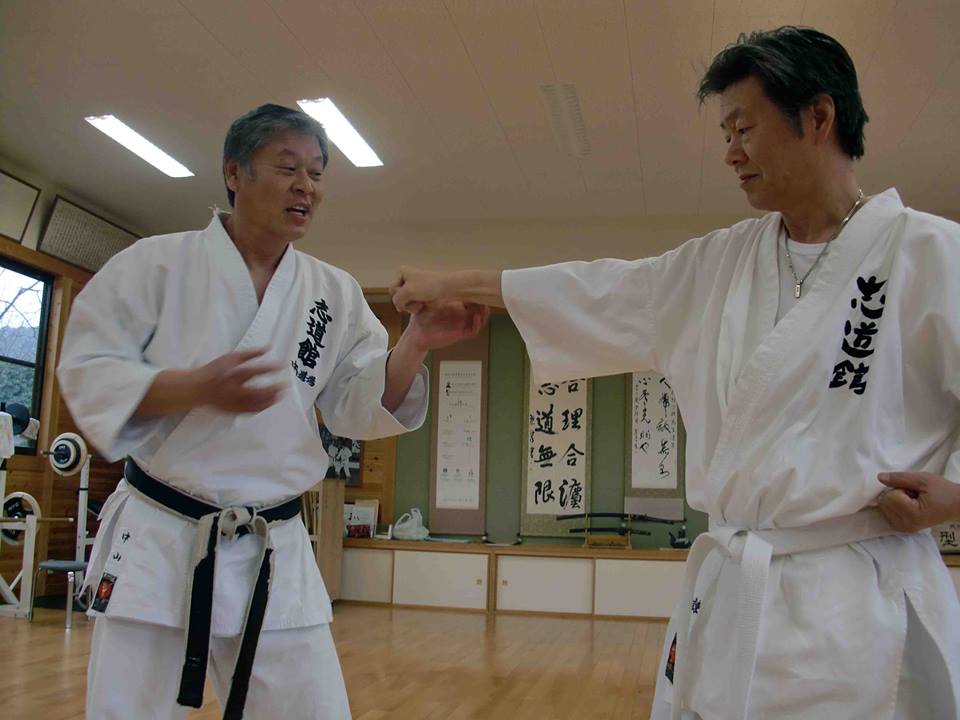 |
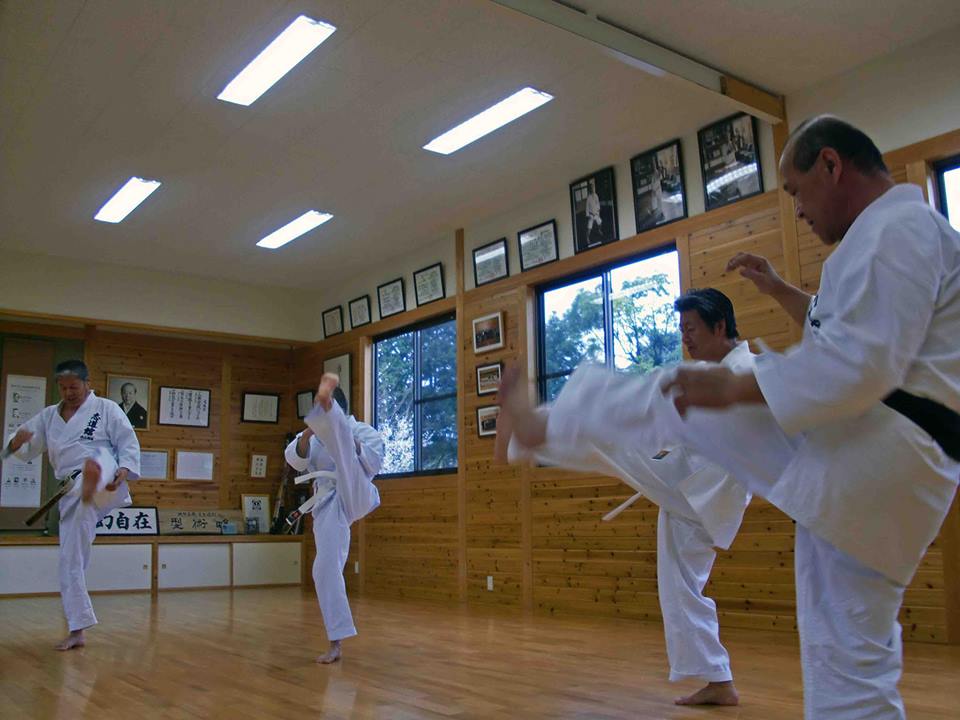 |
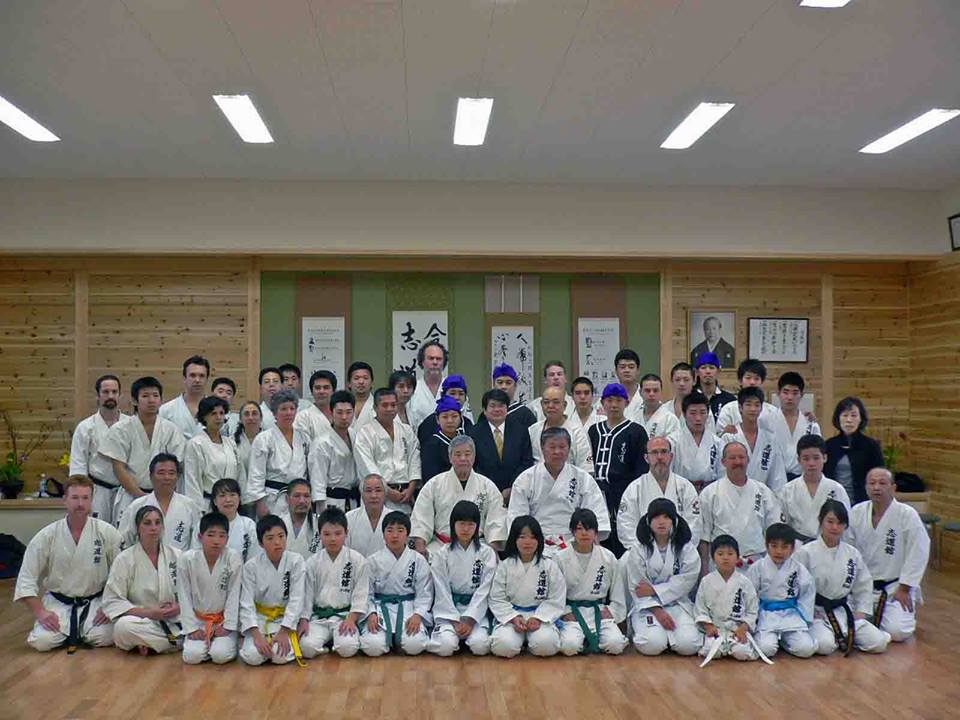 |
Kimono
Kimono is the traditional is the Japanese traditional costume.
A material of Kimono is usually silk or cottom.
These fays, fewer people wear Kimono. There are various type
of Kimono such as Furisode for single lady, formal Kimono for
married women and Yukata for summer.
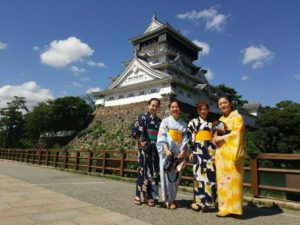 |
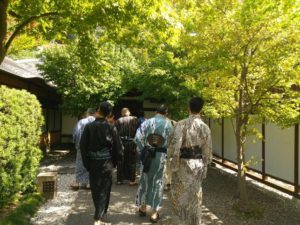 |
Takachiho-no-Yokagura
Takachiho-no-Yokagura is a Shinto ritual which has been dedicated to Ujigami-sama
(a local god) from November to February for each settlement since a long time ago.
For the people who cannot enjoy Takachiho-no-Yokagura, leading 4 episodes are
performed from 8pm to 9pm at Takachiho Shrine Kagura-den Hall throghout the year.
First three episodes (The dance of Tajikarao, Uzume, Totori) are based on Iwato
Mythology. The dance of Goshitai is a dance of a married couple (Izanagi and
Izanami) living happily together. It expresses a prayer for a rich harvest, happily
married, smooth delivery and pregnancy.
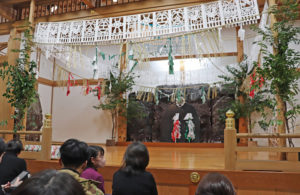 |
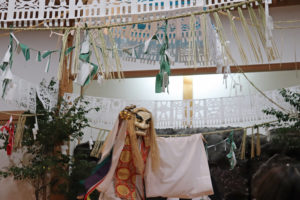 |
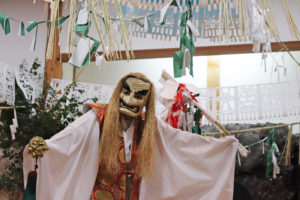 |
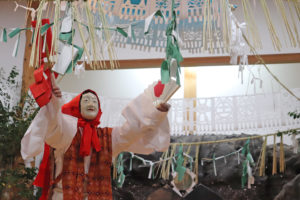 |
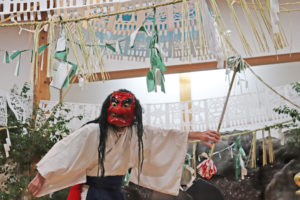 |
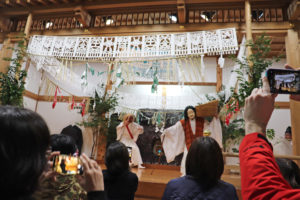 |
Hakata-za, in Fukuoka-city
Hakata-za is the theater for Kabuki plays and is located in the Hakata Riverain in Nakasu
It was originally constructed in 1996.
Kabuki is one of Japanese traditional stage arts along with Nho, Kyogen and Bunraku.
It is said to have originated in Kyoto with a woman named Okuni at the beginning of the
17th century. However, it is now performed only by male actors, so it amazing that the very
first performance was by a woman.
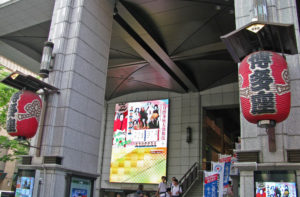 |
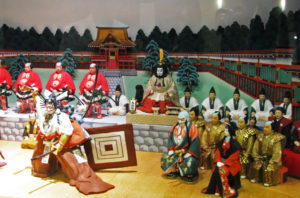 |
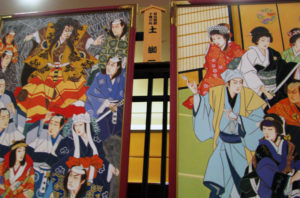 |
Hinamatsuri, girls Festival
Hinadoll is displayed at the Hina matsuri ( girls Festival) to celebrate for family with young
girls to pray for their good health and happiness.
Hina matsuri is a traditional Japanese event that announces the arrival of spring and
are held many places.
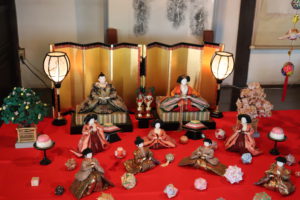 |
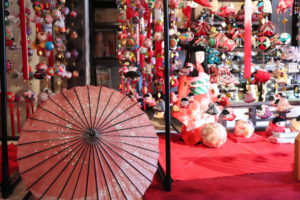 |
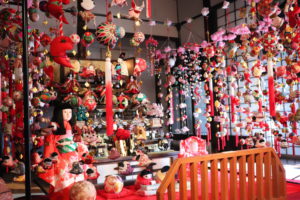 |
Sumo
wrestlers in the round ring called Dohyo.
into touching the ground with anything other than the sole of feet,
there are 48 wining techniques.
in Tokyo, Nagoya, Osaka and Fukuoka-city.
Fukuoka Tournament is held at Fukuoka Kokusai Center in November.
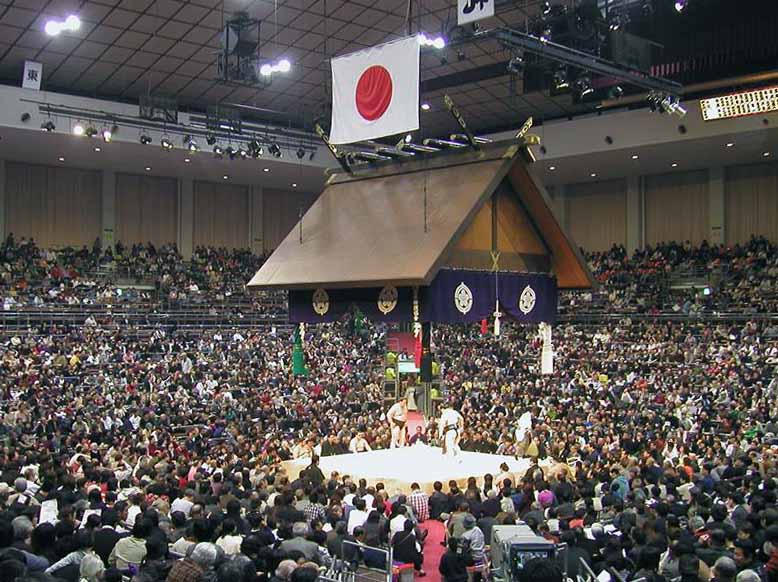 |
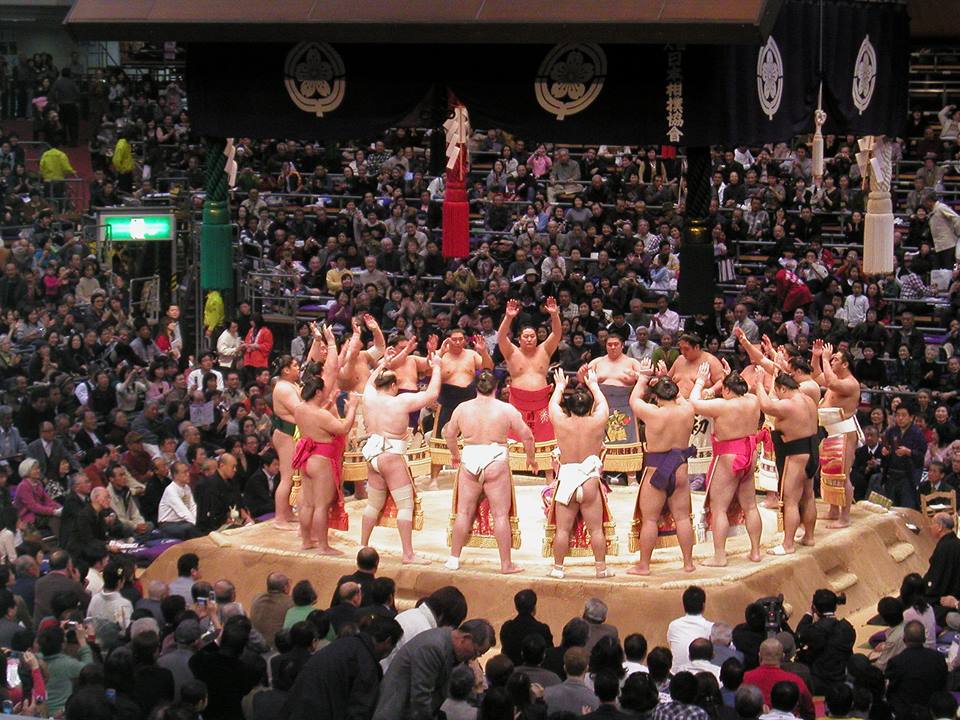 |
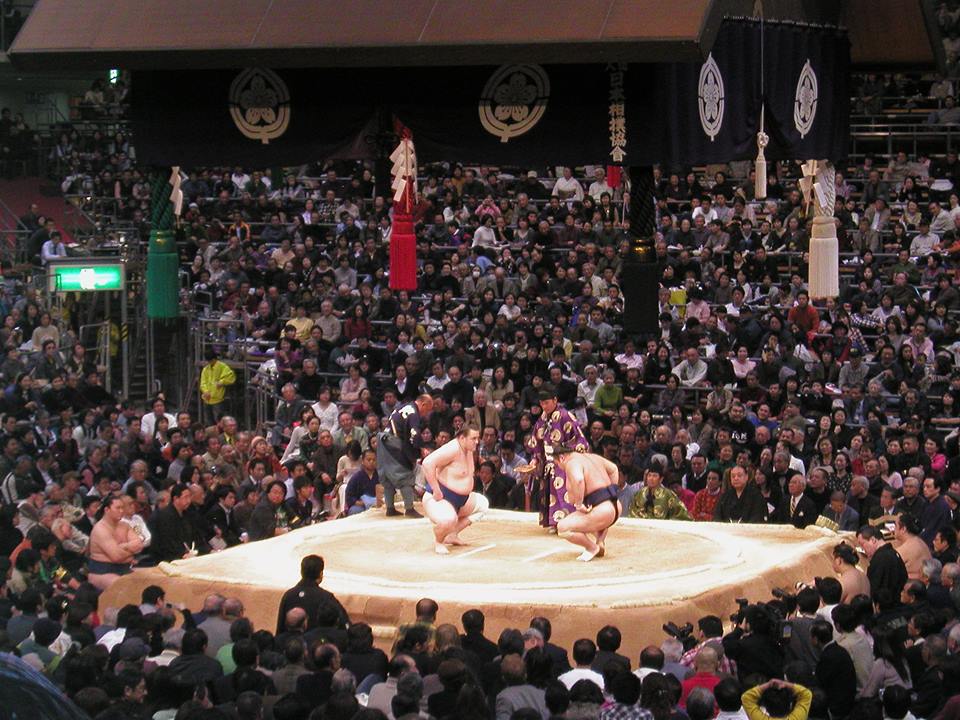 |
Hatsu-moude, 初詣
Hatsu-moude is one of Japanese custom that first visit of the year to Shrines
or/and Temples.
Literal meaning of Hatsu is first and moude is pray.
Most Japanese people visit Shrines and/or Temples at the beginning of the year
to pray for happiness for the year.
What they pray are variety such as safety and health of family, business prosperity,
traffic safety, a good harvest in agriculture, a big catch in the fishing industry,
prevention of natural disasters, etc.
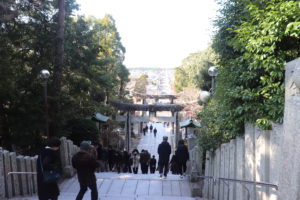 |
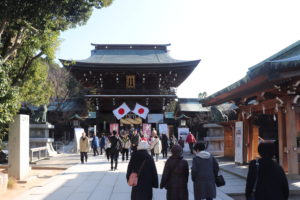 |
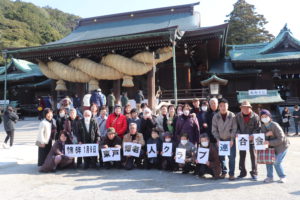 |

